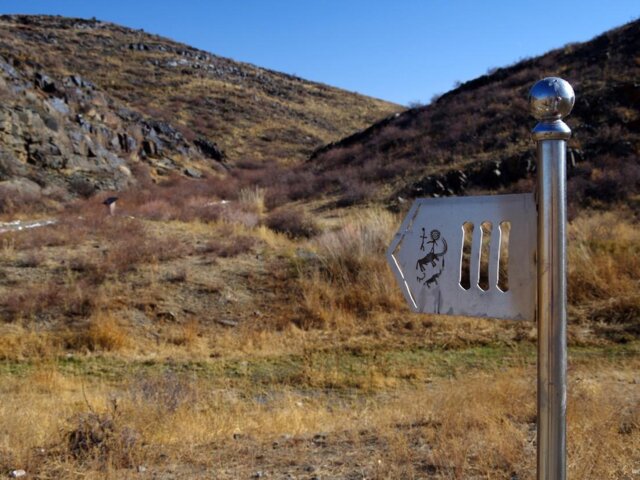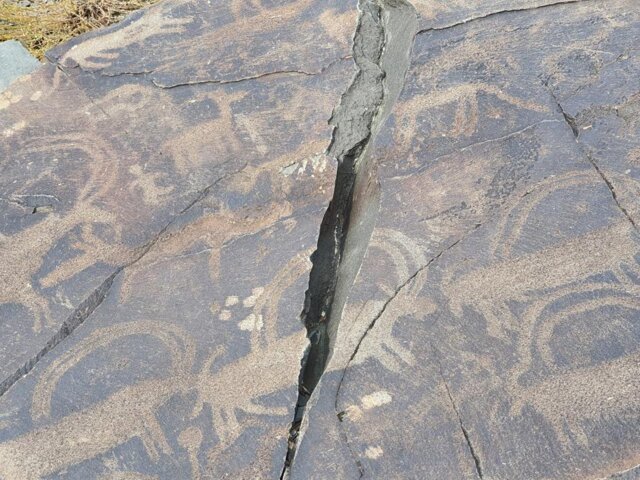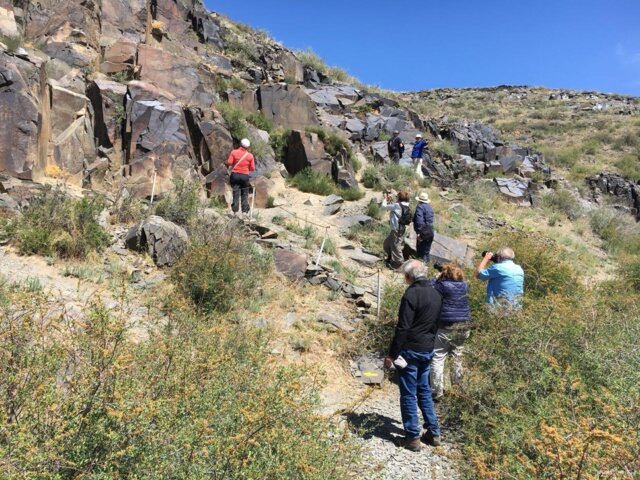Tanbaly Petroglyph Site
Only exceptional natural sites and human-made structures are included on the UNESCO World Heritage List. In Kazakhstan, only five sites have earned this distinction, including the Tanbaly Petroglyphs in the Almaty Region.
What are petroglyphs?
Petroglyphs are ancient, carved images depicting animals, people, mythical creatures, or scenes from tribal life. These drawings, made by people from long ago, can be found in the Tanbaly archaeological landscape in the Almaty Region of Kazakhstan. The oldest petroglyphs in this area date back to the Bronze Age, around the 14th to 13th centuries BC, a time when the Trojan War was taking place, Pharaoh Tutankhamun was ascending the throne, and pastoral tribes were roaming the present-day territory of Kazakhstan.
To this day, the purpose behind the ancient carvings remains a subject of debate among scientists. Some believe that tribes used petroglyphs to communicate with each other before writing was invented, while others see it as a form of self-expression. However, the majority of researchers agree that petroglyphs were of a ritualistic nature and served as a part of magical practices. This theory is supported by the fact that petroglyphs are often found in sacred places such as mausoleums and sanctuaries. At the Tanbaly archaeological site, evidence of burials and altars has also been found, suggesting that this area was used as a place of worship.

Masterpieces of rock art
The ancient artists at the Tanbaly tract depicted a variety of scenes on the rocks. Scientists have recorded several thousand petroglyphs, including images of bulls, argali sheep, warriors with spears, women giving birth, shamans, hunting scenes, and animal sacrifices. The petroglyphs were carved using stone and metal tools.
One of the most enigmatic petroglyphs in not just the Tanbaly tract, but throughout Kazakhstan, is the image of a sun-headed deity. This figure is depicted with a human body and a large head from which rays radiate. There are several such images in Tanbaly, each unique, with variations in the patterns within the «halos», the size of the figures, and the position of their hands.
Images of sun-headed deities can be found in rock art worldwide. Solar myths are common among many cultures, as the sun has always been associated with warmth, abundance, and prosperity. Nomadic peoples, in particular, attributed divine power to the sun as their way of life was deeply connected to nature and weather conditions.
Outstanding historical monument
Unfortunately, the valuable ancient petroglyphs were not always properly protected. In the mid-20th century, a settlement and military garrison were built in the area and a road was constructed, along which heavy trucks traveled. However, in 1998, the site was added to the UNESCO World Heritage Tentative List, which includes objects in need of protection from harmful human activities. The road was then closed, and the site was placed under protection. Finally, in 2004, the Tanbaly tract was officially included on the UNESCO World Heritage List, meaning it is now under special control and financing from the World Heritage Fund. The state is directly responsible for its preservation.
Visiting the Tanbaly tract is a must for history enthusiasts, nature lovers, and rock climbers looking to conquer the nearby Anrakay Mountains. For travelers tired from a long journey, the site provides comfortable facilities, including a gazebo and a yurt, where you can relax and even enjoy a traditional Central Asian swing, the altybakan.
It is important to note that the Tanbaly petroglyphs should not be confused with the Tamgaly-Tas petroglyphs located along the banks of the Ili River, north of the city of Konayev (formerly Kapshagai) in the Almaty Region. There is often confusion because the Tanbaly tract is sometimes called the Tamgaly tract.

How to get there?
Petroglyphs of Tanbaly are located 160 km (100 mi) northwest of Almaty. Take the A-2 highway west, then turn right at the fork a few kilometers after the village of Targap. Continue driving north for approximately 65 km (40 mi) to reach the site. The one-way trip should take around 3 hours.
An individual tour of the Tanbaly tract is highly recommended, as it offers a more relaxed and personalized experience. Unlike group tours, private tours allow you to visit the site at your own pace, without being rushed, and with the opportunity to ask any questions you may have. Enjoy a comfortable drive to the tract and take the time to fully appreciate the petroglyphs and their significance.
Other tourist attractions near the Tanbaly Petroglyph Site:
- Mount Ungurtas
- Karakyr Tract
- Sunkarsay Gorge
- Kulzhabasy Petroglyph Site
- Aytau Mountains





_420x650_4ab.jpg)